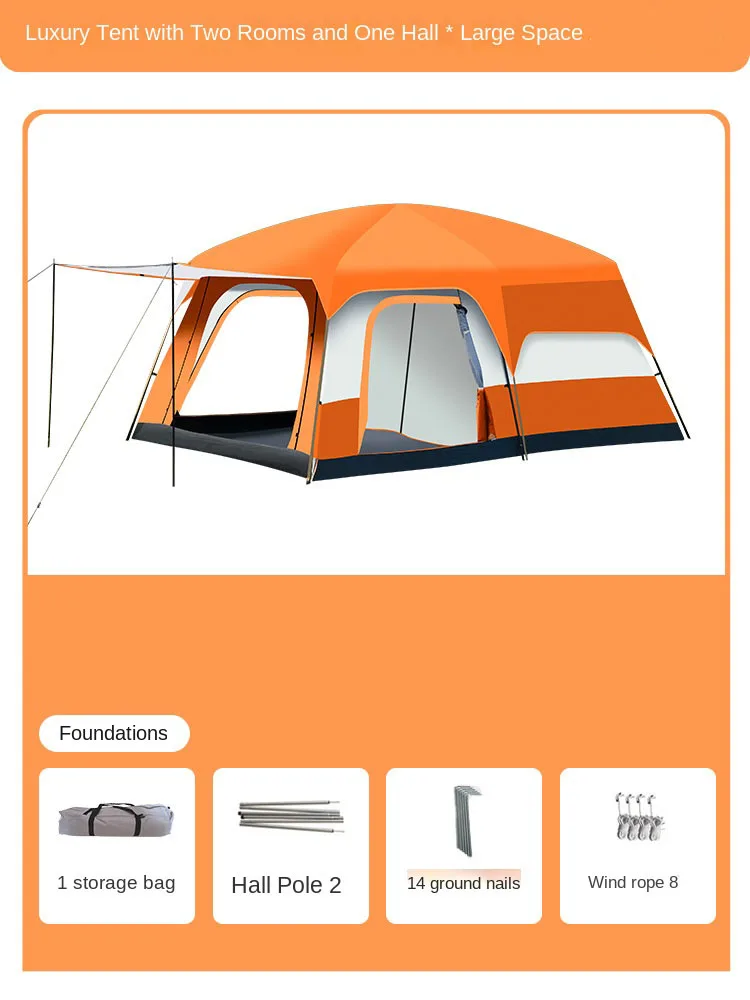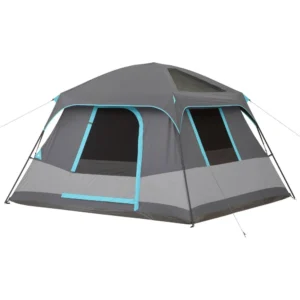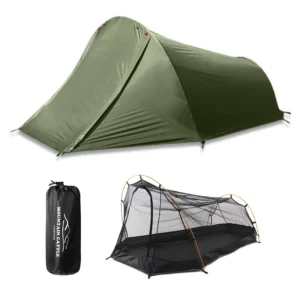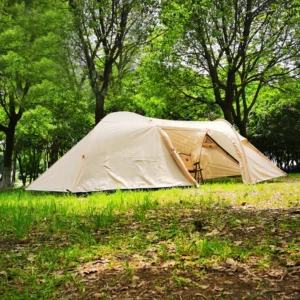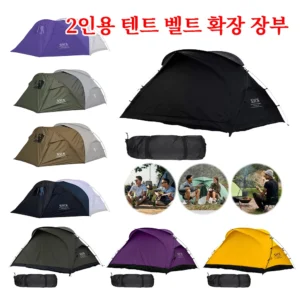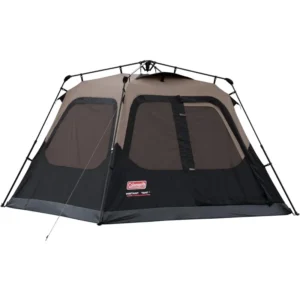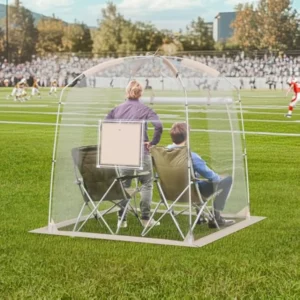Why Camping Remains a Fulfilling Experience for Seniors
Camping continues to be a rewarding activity for seniors and older adults who wish to maintain their connection with nature. As we age, the appeal of peaceful mornings by the lake or evenings under starlit skies doesn’t diminish—in fact, many seniors discover a renewed appreciation for outdoor experiences.
The benefits of camping extend far beyond simple recreation:
- Physical health advantages: Regular outdoor exposure increases vitamin D levels, encourages gentle physical movement, and often leads to improved sleep quality away from urban noise and light pollution
- Mental wellbeing: Nature immersion reduces stress hormones, improves mood, and provides cognitive stimulation through new environments
- Social connections: Camping creates meaningful opportunities to bond with family members across generations or forge new friendships with fellow campers
Modern camping equipment has evolved significantly to address accessibility concerns that might otherwise prevent older adults from enjoying outdoor adventures. Understanding the importance of choosing the right shelter for camping has become easier as manufacturers recognize the needs of an aging demographic that refuses to give up their outdoor passions.
The foundation of any comfortable camping experience begins with selecting the appropriate tent. With helpful guidance on selecting appropriate shelters for two people, seniors can ensure their outdoor adventures remain fulfilling rather than frustrating.
Research consistently shows that spending time outdoors benefits seniors through improved mental outlook and physical health markers. This explains the growing trend of older adults participating in camping activities, whether joining grandchildren for weekend outings or embarking on their own extended nature retreats. The sense of accomplishment that comes from tents that are simple to set up for shorter trips provides independence that many seniors cherish.
Essential Tent Features for Senior Campers: Prioritizing Comfort and Accessibility
Ease of Setup and Takedown: Simple Systems for Independent Camping
For senior campers, a tent’s setup complexity can make or break the camping experience. Easy setup preserves energy for more enjoyable activities while reducing physical strain and potential frustration.
Modern tent technologies have revolutionized the camping experience for older adults:
- Instant and pop-up tents feature pre-attached poles that expand into position with minimal effort
- Color-coded components eliminate guesswork during assembly
- Oversized, easy-to-grip connection points accommodate hands with reduced dexterity
- Large-print instructions with clear diagrams improve visibility for those with vision challenges
The gold standard for senior-friendly tents is a setup time under five minutes with the ability for a single person to complete the process independently. Our collection of tents designed for quick and simple setup addresses these specific needs with innovative designs that minimize physical demands without sacrificing quality.
Lightweight hub systems and pre-attached pole structures have dramatically reduced both weight and complexity, making camping more accessible than ever for older outdoor enthusiasts who value their independence.
Entry and Exit Design: Accessible Doorways for Safe Movement
Door design significantly impacts safety and comfort for senior campers. The ideal entry and exit points minimize physical strain while maximizing safety.
Key doorway features to consider include:
- D-shaped or U-shaped doors that provide wider openings than traditional designs
- Minimal or no threshold to reduce tripping hazards
- Smooth-operating zippers with large, easy-grip pulls
- Strategic door placement at a height that minimizes bending
- Multiple entry points for convenience and emergency exits
The height of the entry threshold deserves particular attention. Many newer tent models feature nearly ground-level entries, eliminating the need to step over a raised barrier. This simple design improvement significantly reduces fall risk—a primary concern for older campers.
For couples, dual-door designs allow nighttime bathroom trips without disturbing a sleeping partner. When evaluating tent doors, consider not just the width and height but also how the door operates. Quality zippers should run smoothly with minimal catching, even when operated with limited hand strength.
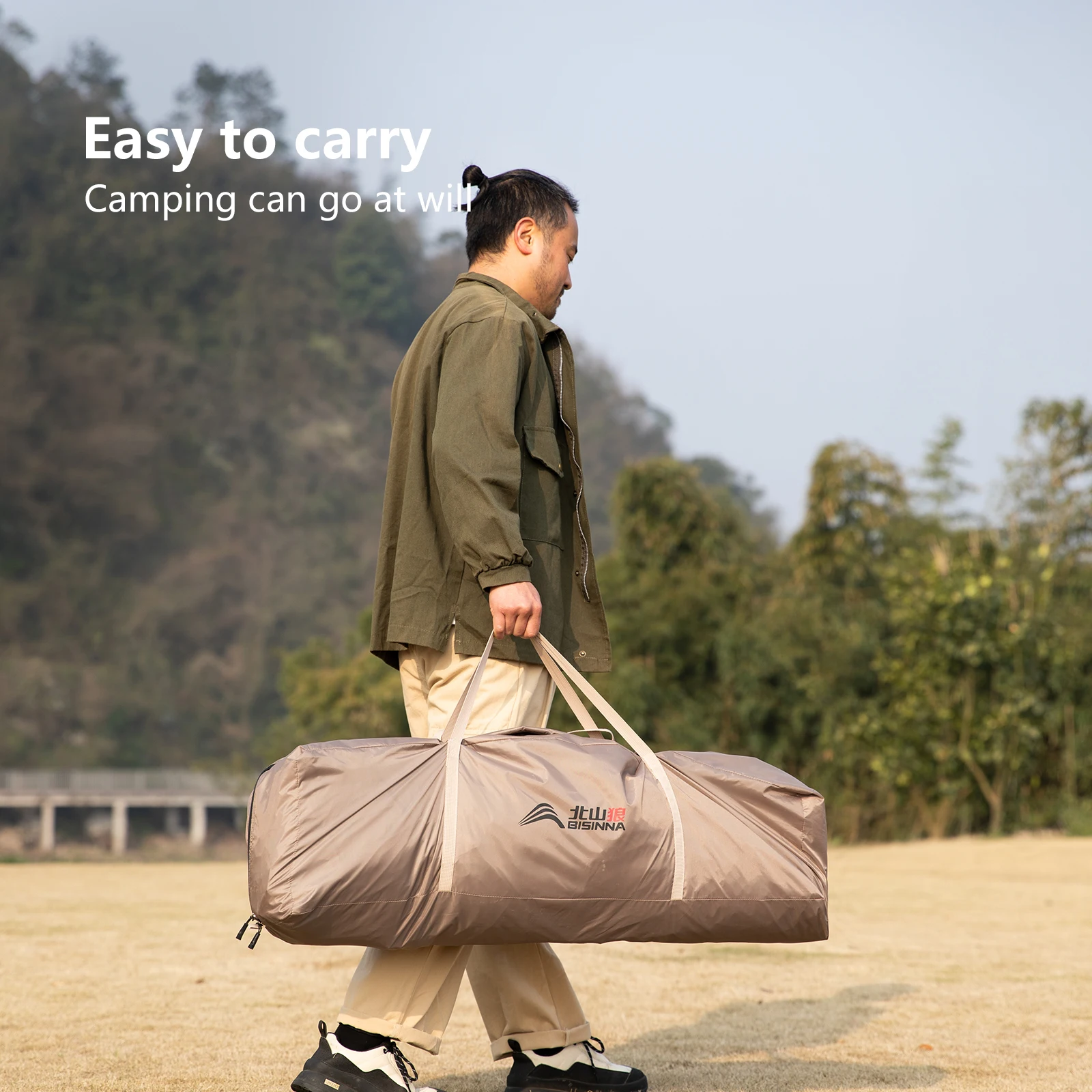
Headroom and Interior Space: Comfortable Movement Inside Your Tent
Adequate interior space transforms a tent from merely functional to genuinely comfortable. For senior campers, being able to move freely inside the tent reduces physical strain and enhances the overall camping experience.
| Tent Style | Typical Center Height | Usable Space | Best For |
|---|---|---|---|
| Dome | 4-5 feet | Center area only | Portability, wind resistance |
| Modified Dome | 5-6 feet | Extended center area | Balance of space and stability |
| Cabin | 6-7+ feet | Nearly vertical walls | Maximum living space, standing room |
| Tunnel | 5-6 feet | Consistent height along center line | Efficient space-to-weight ratio |
Most senior campers benefit from tents designed with increased height for comfortable standing, which eliminate the need to stoop or crawl. Cabin-style tents with near-vertical walls maximize usable floor space, providing room for cots (which are easier to get in and out of than sleeping pads) and even chairs for comfortable seating.
When evaluating interior space, consider not just the floor dimensions but also the slope of the walls. A tent might claim to sleep four people but provide comfortable headroom for only one or two. For those using mobility aids, additional clearance around sleeping areas becomes essential for safety and convenience.
Weather Protection and Ventilation: Creating a Comfortable Shelter
Balancing protection from the elements with proper airflow creates a comfortable tent environment in varying conditions. Senior campers particularly benefit from tents that maintain stable interior conditions without requiring constant adjustments.
Effective weather protection includes:
- Rainfly coverage that extends beyond tent walls to prevent splashback
- Sealed or taped seams that prevent water penetration
- Bathtub-style floors that wrap up the sides to prevent ground-level leakage
- Sturdy pole structures that withstand moderate winds without excessive movement
Equally important is proper ventilation to prevent condensation buildup, which can create uncomfortable dampness and potential slip hazards. Our selection of camping tents with reliable waterproof features incorporates strategic mesh panels that allow air circulation while keeping insects out.
Understanding waterproof ratings helps in selecting appropriate protection. The measurement in millimeters of hydrostatic head indicates how much water pressure a fabric can withstand before leaking—higher numbers mean better waterproofing. For most camping conditions, a rating of 1000mm is minimal, while 3000mm or higher provides excellent protection in heavy downpours.
Organization and Convenience Features: Making Camp Life Easier
Thoughtful interior organization transforms a tent from merely a shelter to a comfortable living space. For senior campers, having essentials within easy reach reduces the need to bend, stretch, or search for important items.
Valuable organizational features include:
- Interior mesh pockets at accessible heights for storing eyeglasses, medications, and flashlights
- Overhead gear lofts for keeping items dry and within view
- Built-in lantern hooks or light-hanging loops at convenient heights
- Electrical cord ports for running power safely into the tent
- Designated storage areas that keep pathways clear of trip hazards
Many premium tents now include built-in LED lighting systems that eliminate the need to hang or position lanterns. These lighting systems typically offer adjustable brightness and can be operated with large, easy-to-locate switches.
Vestibules—covered areas outside the main tent body but under the rainfly—provide valuable space for storing shoes and equipment without cluttering the sleeping area. When evaluating organization features, consider their placement relative to sleeping positions for middle-of-the-night accessibility.
Top Tent Types for Senior Campers: Finding Your Ideal Style
Instant and Pop-Up Tents: Maximum Convenience
Instant tents represent the pinnacle of setup convenience, with pre-attached frame systems that expand into position in minutes or even seconds. These designs have revolutionized camping accessibility for seniors with limited strength or mobility.
Pros:
– Ultra-quick setup (typically 60-90 seconds)
– Minimal physical exertion required
– Often manageable by a single person
– No loose parts to keep track of
– Ideal for frequent campsite changes
Cons:
– Generally heavier than traditional pole tents
– Typically more expensive than comparable traditional designs
– May be bulkier when packed
– Can be more difficult to repair in the field if damaged
The technology behind tents that offer quick setup for maximum convenience continues to improve, with newer models offering better storm resistance and durability than earlier generations. Setup typically involves unfolding the structure, extending the pre-attached poles until they lock, and securing the tent with stakes—a process requiring minimal bending or overhead reaching.
While instant tents usually carry a higher price tag (typically $150-400 depending on size and quality), the investment pays dividends in reduced frustration and physical strain across multiple camping trips.
Cabin-Style Tents: Spacious Living
Cabin tents feature nearly vertical walls that maximize interior living space, creating a home-like environment that many senior campers prefer, especially for longer stays.
Pros:
– Outstanding headroom throughout (not just at center)
– Flat walls maximize usable floor space
– Often include room dividers for privacy
– Large windows for excellent views and ventilation
– Accommodate cots and furniture easily
– Many feature multiple doors for convenient access
Cons:
– Typically heavier and bulkier than other designs
– More complex setup than instant tents
– Less wind-resistant than lower-profile designs
– Require larger campsite footprints
Cabin tents excel in established campgrounds where their size and comfort advantages outweigh portability concerns. Their straight walls allow seniors to move about without stooping, while large doorways (often standard door height) eliminate the need to duck when entering or exiting.
Setup times for cabin tents vary widely, from 10-15 minutes for simpler designs to 30+ minutes for large multi-room models. Many seniors find this acceptable when balanced against the significant comfort advantages these spacious shelters provide.
Hybrid Designs: Screen Houses and Tent Combinations
Hybrid camping shelters combine sleeping quarters with screened living spaces, offering versatility that many senior campers appreciate.
Pros:
– Protected bug-free lounging space separate from sleeping area
– Excellent ventilation while maintaining privacy
– Extended protected space for rainy day activities
– Clear separation between sleeping and living spaces
– Added accessibility with multiple entry points
Cons:
– Larger footprint requires more campsite space
– More complex setup with multiple rooms
– Higher cost than single-purpose tents
– Heavier total weight
These combination designs particularly shine in hot weather or buggy environments, where the screened room provides a pleasant gathering space protected from insects yet open to cooling breezes. For seniors who enjoy entertaining family or fellow campers, these social spaces prove invaluable.
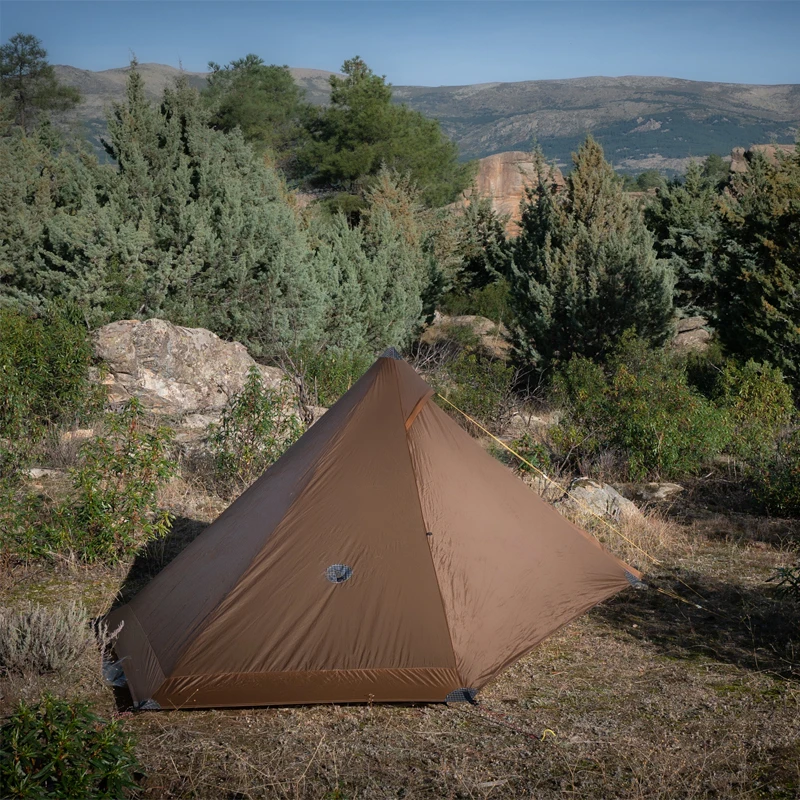
Top Easy Access Tents Recommended for Senior Campers
Best Overall Options for Senior Campers
After evaluating dozens of tents specifically through the lens of senior accessibility, these models stand out for their combination of easy setup, comfortable access, and practical features:
Core 9-Person Instant Cabin Tent
– Setup time: Under 2 minutes with one person
– Key features: 78-inch center height, room divider, large D-shaped door
– Weight: 30.5 pounds
– Packed size: 48 x 11 x 11 inches
– Price range: $$$
– Best for: Extended campground stays with family
Coleman 4-Person Cabin Tent with Instant Setup
– Setup time: Approximately 1 minute
– Key features: Pre-attached poles, 59-inch center height, weather-resistant design
– Weight: 18.2 pounds
– Packed size: 39.7 x 8.5 x 8.5 inches
– Price range: $$
– Best for: Weekend getaways with minimal setup hassle
Gazelle T4 Hub Tent
– Setup time: 90 seconds
– Key features: Pop-up hub design, removable floor, 78-inch standing height
– Weight: 30 pounds
– Packed size: 67.5 x 8 x 8 inches
– Price range: $$$
– Best for: Seniors who prioritize both quick setup and spacious comfort
Understanding different shelter options suitable for two people helps narrow down choices for couples exploring easy-access tent options. Each of these recommendations balances accessibility with quality construction to ensure both convenience and durability.
Budget-Friendly Accessible Tent Options
Quality accessible tents need not break the bank. These options deliver senior-friendly features at more moderate price points:
Coleman Sundome Tent
– Setup time: 10 minutes
– Key features: Large D-shaped door, simple two-pole design, excellent ventilation
– Weight: 9.8 pounds (4-person version)
– Packed size: 24 x 6 x 6 inches
– Price range: $
– Best for: Occasional campers seeking value with acceptable accessibility
Core Equipment 4-Person Dome Tent
– Setup time: 5-7 minutes
– Key features: 54-inch center height, electrical cord port, large door opening
– Weight: 9 pounds
– Packed size: 24 x 7 x 7 inches
– Price range: $
– Best for: Budget-conscious campers who prioritize entrance accessibility
While these more affordable options may require slightly longer setup times than premium instant tents, they maintain important accessibility features like wide doorways and simplified pole structures. The primary compromises appear in materials (typically lighter-weight polyester versus more durable alternatives) and in some convenience features rather than in fundamental accessibility.
Premium Comfort Tents Worth the Investment
For seniors planning frequent or extended camping trips, these premium options deliver exceptional accessibility features and durability that justify their higher price points:
Kodiak Canvas Flex-Bow Deluxe Tent
– Setup time: 15-20 minutes (but incredibly sturdy)
– Key features: 6‘6” ceiling height, heavy-duty canvas construction, superior weather protection
– Weight: 79 pounds (8-person version)
– Packed size: 48 x 16 x 16 inches
– Price range: $$$$
– Best for: Long-term durability and all-weather protection
NEMO Wagontop 6P Tent
– Setup time: 10-12 minutes
– Key features: Nearly vertical walls, 80-inch peak height, massive doors
– Weight: 27 pounds
– Packed size: 27 x 12 x 12 inches
– Price range: $$$$
– Best for: Maximum interior space with superior ventilation
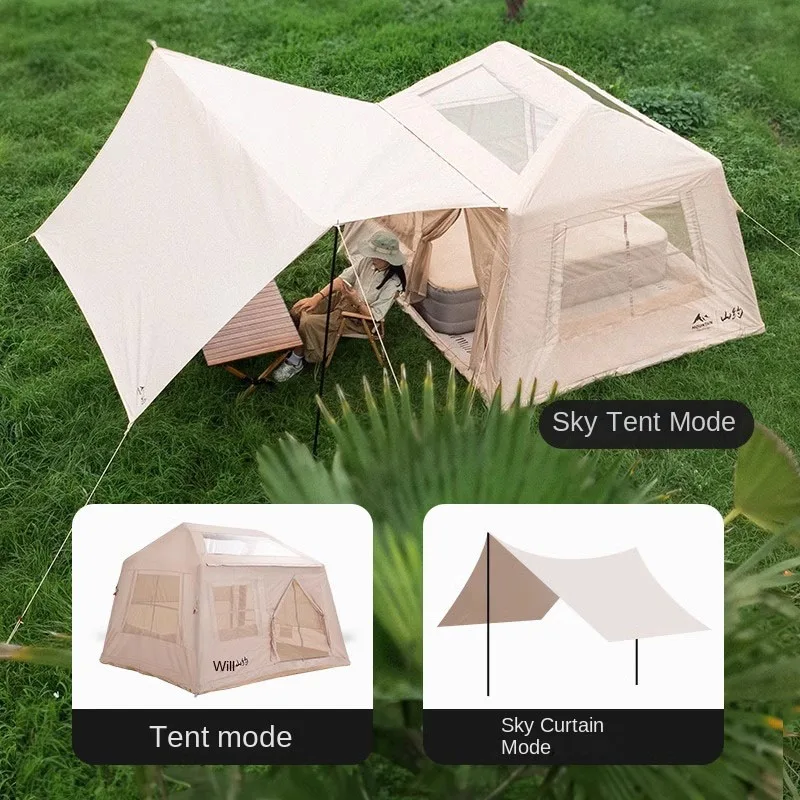
Tall / Stand Up Camping Tent, Two Room Camping Tent
$407.93 Select options This product has multiple variants. The options may be chosen on the product pageCompact Backpacking Tent, Lightweight Backpacking Tent, Waterproof Camping Tent
$335.52 Select options This product has multiple variants. The options may be chosen on the product pageCamping Tent with Vestibule, Waterproof Camping Tent
Price range: $407.89 through $479.48 Select options This product has multiple variants. The options may be chosen on the product pageBackpacking Tent with Vestibule, Trekking Pole Backpacking Tent, Waterproof Camping Tent
Price range: $271.99 through $519.52 Select options This product has multiple variants. The options may be chosen on the product pageEasy Setup Camping Tent, Instant Camping Tent
Instant Cabin Tent Double Layer Canvas 1-Minute Setup Spacious Family Camping Shelter with Air Vents$308.10 Select options This product has multiple variants. The options may be chosen on the product page
Making Your Selection: A Buyer’s Guide for Senior Campers
Assessing Your Camping Style and Requirements
Finding your perfect tent starts with honest self-assessment about your specific needs and camping style. Consider these questions before making your selection:
- How frequently will you camp each year?
- What season(s) will you typically camp in?
- Will you usually camp at established campgrounds or more remote locations?
- How far will you need to transport your tent from vehicle to campsite?
- Who will typically assist with setup and takedown?
- Do you have any specific mobility limitations that require accommodation?
- What sleeping system will you use (sleeping pad, air mattress, or cot)?
Your answers will guide tent selection significantly. For example, seniors who primarily car-camp at established campgrounds with nearby parking can prioritize comfort and space over weight concerns. Those who enjoy setting up lightweight tents with minimal effort might focus more on simplicity than expansive features.
Consider not just your current needs but anticipated changes over the next few years. A quality tent represents a significant investment that should serve you through evolving requirements.
Finding the Right Size: Comfort vs. Portability
When selecting tent size, the standard advice to “size up” becomes even more important for senior campers. The common recommendation is to choose a tent rated for at least one or two more people than will actually use it.
For example:
– Solo camper: Choose a 2-3 person tent
– Couple: Choose a 4-5 person tent
– Family of four: Choose a 6-8 person tent
This sizing strategy provides crucial extra space for comfortable movement, especially when using cots (which require more floor space than sleeping pads). Additional room also creates clear pathways that reduce trip hazards and accommodate easier access to gear.
Remember that tent weight generally increases with size. Balance your need for space against transportation realities and setup demands. Many seniors find the sweet spot with tents that provide generous interior dimensions while packing into a manageable size that fits easily in their vehicle.
Understanding Weather Ratings and Seasonality
Tent season ratings help guide selection based on your typical camping conditions:
| Season Rating | Designed For | Key Features | Best For Seniors |
|---|---|---|---|
| 2-Season | Warm, dry conditions | Maximum ventilation, minimal weather protection | Summer camping in reliable climates |
| 3-Season | Spring through fall, light winter | Balance of ventilation and weather protection | Most senior campers’ needs |
| 4-Season | All conditions including snow/high winds | Reinforced structure, less ventilation | Winter camping enthusiasts |
For most senior campers, a quality 3-season tent provides the versatile protection needed for typical camping adventures. These tents balance reasonable weather resistance with good ventilation for comfortable sleeping.
Waterproof ratings, measured in millimeters of water column (mm H₂O), indicate how much water pressure a fabric can withstand before leaking. For tent floors, look for ratings of 2000mm or higher; for rainflies, 1500mm typically provides good protection. Higher numbers indicate better waterproofing but often come with increased weight and cost.
Beyond the Tent: Creating a Complete Accessible Camping Setup
Choosing the Perfect Campsite for Accessibility
The ideal campsite complements your accessible tent with terrain and features that enhance overall comfort and safety:
- Select level ground with minimal slope to prevent sliding during sleep and reduce trip hazards
- Avoid sites with numerous roots, rocks, or other natural obstacles
- In established campgrounds, look for designated accessible sites with paved or packed surfaces
- Consider proximity to restrooms and water sources (generally within 100-200 feet is ideal)
- Evaluate sun/shade patterns—morning sun and afternoon shade often create ideal temperature conditions
- Check for overhanging branches or potential falling hazards before setting up
Many popular campgrounds now offer online reservation systems with photos and detailed descriptions of each site. Taking advantage of these systems allows you to research accessibility features before arrival. Some campgrounds also offer senior discounts or dedicated senior camping areas with enhanced accessibility features.
Essential Sleeping Equipment for Comfortable Nights
The right sleeping system transforms an accessible tent into a genuinely comfortable overnight experience. For senior campers, these options offer particular benefits:
Camping Cots
Elevated sleeping platforms (typically 15-19 inches high) eliminate the need to get down to ground level. Look for models with sturdy frames, easy setup, and weight ratings appropriate for your needs. Some taller tent designs improve comfort for senior campers by providing adequate height clearance for cots plus generous headroom.
Air Mattresses
Self-inflating or electric-pump air mattresses offer customizable firmness and more padding than traditional sleeping pads. Queen-sized options closely replicate the feeling of a bed at home. Consider height when selecting—taller mattresses (8-10 inches) are easier to get in and out of but require more tent height.
Sleeping Bags vs. Bedding
Traditional sleeping bags can be challenging to enter and exit. Many seniors prefer a “bed-style” approach using regular sheets and blankets or a rectangular sleeping bag fully unzipped and laid flat. This arrangement allows easier movement during the night and familiar sleeping conditions.
Safety First: Preparing for a Worry-Free Trip
Creating a safe camping environment involves preparation and attention to detail:
- Medical preparedness: Pack all medications in waterproof containers with clear labeling, including a printed schedule if needed
- Lighting solutions: Install multiple light sources including headlamps, lanterns, and string lights to illuminate pathways and tent interior
- Communication: Carry fully charged cell phones plus a backup power bank, and consider a whistle or personal alarm for emergencies
- Weather monitoring: Bring a weather radio or ensure your smartphone can receive weather alerts
- Trip plan: Share your itinerary and expected return time with a reliable contact person
- Campsite navigation: Place reflective markers or solar path lights between your tent and bathroom facilities for nighttime orientation
A laminated card with emergency contacts, current medications, and relevant medical information stored in an accessible location provides peace of mind for both solo campers and groups.
Enjoying Your Camping Adventure with Confidence
With the right equipment and preparation, camping remains one of life’s great pleasures at any age. The key to successful senior camping lies in selecting gear that accommodates changing needs while maintaining the essence of what makes outdoor adventures special—connection with nature, quality time with loved ones, and the simple joy of outdoor living.
When selecting your tent, remember that accessibility features benefit everyone, not just those with specific mobility concerns. Wide doorways, simple setup, and thoughtful organization make camping more enjoyable for all participants while ensuring seniors can maintain their outdoor independence.
Start with shorter trips to nearby destinations as you test new equipment and refine your camping style. This approach builds confidence and allows for adjustments before more ambitious adventures. Many senior campers find that campgrounds with partial amenities (like shower facilities and electrical hookups) provide an ideal balance between comfort and authentic outdoor experience.
The camping community welcomes enthusiasts of all ages, with seniors often appreciated for their experience and outdoor wisdom. By selecting the right tent and accompanying gear, you’re not just preparing for a camping trip—you’re continuing or beginning a lifelong relationship with the natural world that offers profound benefits for physical health, mental wellbeing, and quality of life.
Remember that the best tent is the one that encourages you to get outdoors more often. The perfect balance of accessibility, comfort, and practicality will be unique to your needs, but the fundamental goal remains the same—enjoying the great outdoors with confidence and joy.

